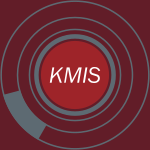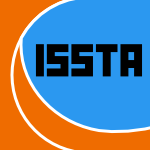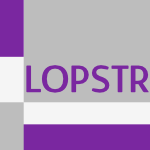239 papers:
 HT-2015-ChungL #framework #predict
HT-2015-ChungL #framework #predict- A Long-Term Study of a Crowdfunding Platform: Predicting Project Success and Fundraising Amount (JC, KL), pp. 211–220.
 ITiCSE-2015-AndersonNM #programming
ITiCSE-2015-AndersonNM #programming- Facilitating Programming Success in Data Science Courses through Gamified Scaffolding and Learn2Mine (PEA, TN, RAM), pp. 99–104.
 ITiCSE-2015-Cukierman #learning #predict #process #student
ITiCSE-2015-Cukierman #learning #predict #process #student- Predicting Success in University First Year Computing Science Courses: The Role of Student Participation in Reflective Learning Activities and in I-clicker Activities (DC), pp. 248–253.
 ICSME-2015-PalombaVBOPPL #crowdsourcing #evolution #exclamation #matter
ICSME-2015-PalombaVBOPPL #crowdsourcing #evolution #exclamation #matter- User reviews matter! Tracking crowdsourced reviews to support evolution of successful apps (FP, MLV, GB, RO, MDP, DP, ADL), pp. 291–300.
 MSR-2015-CalefatoLMN #mining #stack overflow
MSR-2015-CalefatoLMN #mining #stack overflow- Mining Successful Answers in Stack Overflow (FC, FL, MCM, NN), pp. 430–433.
 SANER-2015-GuerroujAR #stack overflow
SANER-2015-GuerroujAR #stack overflow- The influence of App churn on App success and StackOverflow discussions (LG, SA, PCR), pp. 321–330.
 LATA-2015-BilottaPPR #problem
LATA-2015-BilottaPPR #problem- Recurrence Relations, Succession Rules, and the Positivity Problem (SB, EP, RP, SR), pp. 499–510.
 CHI-2015-PalenSAB #evolution
CHI-2015-PalenSAB #evolution- Success & Scale in a Data-Producing Organization: The Socio-Technical Evolution of OpenStreetMap in Response to Humanitarian Events (LP, RS, TJA, MB), pp. 4113–4122.
 CSCW-2015-Warncke-WangAHT #community #quality
CSCW-2015-Warncke-WangAHT #community #quality- The Success and Failure of Quality Improvement Projects in Peer Production Communities (MWW, VRA, BH, LGT), pp. 743–756.
 DUXU-DD-2015-Robier #experience
DUXU-DD-2015-Robier #experience- Innovation, Exceptional Experience and Sustainable Success Made Easy: The NI© Needs Innovation Model (JR), pp. 348–355.
 HCI-DE-2015-WatsonS #assessment #using
HCI-DE-2015-WatsonS #assessment #using- Using Readers’ and Organizations’ Goals to Guide Assessment of Success in Information Websites (RBW, JHS), pp. 283–294.
 HCI-UC-2015-ZhaoH15a #assessment #concept #enterprise
HCI-UC-2015-ZhaoH15a #assessment #concept #enterprise- Post-Implementation ERP Success Assessment: A Conceptual Model (FZ, EH), pp. 246–255.
 LCT-2015-HoffmannPLSMJ #learning #student
LCT-2015-HoffmannPLSMJ #learning #student- Enhancing the Learning Success of Engineering Students by Virtual Experiments (MH, LP, LL, KS, TM, SJ), pp. 394–405.
 KDD-2015-LiT
KDD-2015-LiT- The Child is Father of the Man: Foresee the Success at the Early Stage (LL, HT), pp. 655–664.
 SEKE-2015-BurnayJF #elicitation #how #requirements
SEKE-2015-BurnayJF #elicitation #how #requirements- How Stakeholders’ Commitment May Affect the Success of Requirements Elicitation (CB, IJ, SF), pp. 336–341.
 ICALP-v1-2014-MancinskaV #bound #probability
ICALP-v1-2014-MancinskaV #bound #probability- Unbounded Entanglement Can Be Needed to Achieve the Optimal Success Probability (LM, TV), pp. 835–846.
 CHI-2014-MatthewsCWPZBS #community #enterprise #online #question #what
CHI-2014-MatthewsCWPZBS #community #enterprise #online #question #what- Goals and perceived success of online enterprise communities: what is important to leaders & members? (TM, JC, SW, AP, HZ, HB, BAS), pp. 291–300.
 CHI-2014-ZhuCMPBK #community #effectiveness #online
CHI-2014-ZhuCMPBK #community #effectiveness #online- Selecting an effective niche: an ecological view of the success of online communities (HZ, JC, TM, AP, HB, REK), pp. 301–310.
 CSCW-2014-DillahuntM #comprehension #energy
CSCW-2014-DillahuntM #comprehension #energy- Understanding factors of successful engagement around energy consumption between and among households (TD, JM), pp. 1246–1257.
 CSCW-2014-MitraG #people #predict
CSCW-2014-MitraG #people #predict- The language that gets people to give: phrases that predict success on kickstarter (TM, EG), pp. 49–61.
 LCT-NLE-2014-MirandaIC #framework #information management
LCT-NLE-2014-MirandaIC #framework #information management- From Information Systems to e-Learning 3.0 Systems’s Critical Success Factors: A Framework Proposal (PM, PTI, CJC), pp. 180–191.
 ICEIS-v1-2014-KaddesASBAB #behaviour #transaction
ICEIS-v1-2014-KaddesASBAB #behaviour #transaction- Behavioral Study of Nested Transaction Success Ratio (MK, LA, BS, AB, MA, RB), pp. 179–186.
 ICEIS-v1-2014-PintoB #architecture #health #implementation
ICEIS-v1-2014-PintoB #architecture #health #implementation- Architectural Key Dimensions for a Successful Electronic Health Record Implementation (EP, ACB), pp. 136–143.
 ICEIS-v2-2014-Kupper #approach #research #social
ICEIS-v2-2014-Kupper #approach #research #social- Measuring the Success of Social CRM — First Approach and Future Research (TK), pp. 573–582.
 KDIR-2014-BydzovskaB #predict #student #towards
KDIR-2014-BydzovskaB #predict #student #towards- Towards Student Success Prediction (HB, MB), pp. 162–169.
 SEKE-2014-Peters #project management
SEKE-2014-Peters #project management- A Knowledge & Competencies Checklist for Software Project Management Success (LP), pp. 241–243.
 SAC-2014-PengST #case study #development #mobile #network #social
SAC-2014-PengST #case study #development #mobile #network #social- Success factors in mobile social networking application development: case study of instagram (RP, DS, WTT), pp. 1072–1079.
 ICSE-2014-RalphK #re-engineering
ICSE-2014-RalphK #re-engineering- The dimensions of software engineering success (PR, PK), pp. 24–35.
 DATE-2013-AlieeGRT #analysis #automation #fault #reliability
DATE-2013-AlieeGRT #analysis #automation #fault #reliability- Automatic success tree-based reliability analysis for the consideration of transient and permanent faults (HA, MG, FR, JT), pp. 1621–1626.
 CSEET-2013-BollinHS #assurance #development #education #process #simulation
CSEET-2013-BollinHS #assurance #development #education #process #simulation- Teaching software development processes by simulation: Wuality assurance as a factor of success (AB, EH, LS), pp. 362–364.
 PEPM-2013-SagonasST #fault #precise #type system
PEPM-2013-SagonasST #fault #precise #type system- Precise explanation of success typing errors (KFS, JS, ST), pp. 33–42.
 CHI-2013-SettlesD #online
CHI-2013-SettlesD #online- Let’s get together: the formation and success of online creative collaborations (BS, SD), pp. 2009–2018.
 DUXU-CXC-2013-HassB #testing #usability
DUXU-CXC-2013-HassB #testing #usability- Usability Testing Medical Devices: A Practical Guide to Minimizing Risk and Maximizing Success (CH, DB), pp. 407–416.
 HCI-IMT-2013-WahabZ #implementation #multi
HCI-IMT-2013-WahabZ #implementation #multi- The Implementation of Multi-touch Table to Support the Military Decision Making through Critical Success Factors (CSFs) (NW, HBZ), pp. 523–529.
 ECIR-2013-FujikawaJN #modelling
ECIR-2013-FujikawaJN #modelling- Tempo of Search Actions to Modeling Successful Sessions (KF, HJ, SiN), pp. 718–721.
 KDIR-KMIS-2013-StroetmannLOE #difference #information management #performance #quality
KDIR-KMIS-2013-StroetmannLOE #difference #information management #performance #quality- When Measuring Performance Makes the Difference — Quality and Success of a Clinical Knowledge Management Project (BS, AL, AO, OE), pp. 419–425.
 MLDM-2013-ParimiC #predict
MLDM-2013-ParimiC #predict- Pre-release Box-Office Success Prediction for Motion Pictures (RP, DC), pp. 571–585.
 ESEC-FSE-2013-VasquezBBPOP #android #api #fault
ESEC-FSE-2013-VasquezBBPOP #android #api #fault- API change and fault proneness: a threat to the success of Android apps (MLV, GB, CBC, MDP, RO, DP), pp. 477–487.
 SPLC-2013-Taylor #architecture #ecosystem
SPLC-2013-Taylor #architecture #ecosystem- The role of architectural styles in successful software ecosystems (RNT), pp. 2–4.
 CHI-2012-ZytoKAM #deployment #documentation #social
CHI-2012-ZytoKAM #deployment #documentation #social- Successful classroom deployment of a social document annotation system (SZ, DRK, MSA, SM), pp. 1883–1892.
 CIKM-2012-BarbosaPG #algorithm #query
CIKM-2012-BarbosaPG #algorithm #query- Generically extending anonymization algorithms to deal with successive queries (MB, AP, BG), pp. 1362–1371.
 CIKM-2012-GuoLA #fine-grained #interactive #predict #web
CIKM-2012-GuoLA #fine-grained #interactive #predict #web- Predicting web search success with fine-grained interaction data (QG, DL, EA), pp. 2050–2054.
 KMIS-2012-FruhmannZ #enterprise #motivation
KMIS-2012-FruhmannZ #enterprise #motivation- Enterprise 2.0 Adoption in SMEs — Application Areas, Motivation, Success Factors and Barriers (SF, MZ), pp. 202–207.
 RecSys-2012-SheehanP #named #personalisation #predict #student
RecSys-2012-SheehanP #named #personalisation #predict #student- pGPA: a personalized grade prediction tool to aid student success (MS, YP), pp. 309–310.
 PPoPP-2012-BallardDK #communication #reduction
PPoPP-2012-BallardDK #communication #reduction- Communication avoiding successive band reduction (GB, JD, NK), pp. 35–44.
 IJCAR-2012-Matiyasevich #automation #reasoning
IJCAR-2012-Matiyasevich #automation #reasoning- Enlarging the Scope of Applicability of Successful Techniques for Automated Reasoning in Mathematics (YM), p. 9.
 VLDB-2012-ArmbrustCKFFP11 #in the cloud #named #query
VLDB-2012-ArmbrustCKFFP11 #in the cloud #named #query- PIQL: Success-Tolerant Query Processing in the Cloud (MA, KC, TK, AF, MJF, DAP), pp. 181–192.
 CSEET-2011-LongstreetC #education #game studies #re-engineering #student #using
CSEET-2011-LongstreetC #education #game studies #re-engineering #student #using- Using games in software engineering education to increase student success and retention (CSL, KMLC), p. 554.
 CSEET-2011-Skevoulis #industrial #re-engineering
CSEET-2011-Skevoulis #industrial #re-engineering- Engineering a successful partnership between academia and the financial industry: A software engineering program for IT professionals (SS), pp. 343–350.
 ITiCSE-2011-FeasterSWH #education
ITiCSE-2011-FeasterSWH #education- Teaching CS unplugged in the high school (with limited success) (YF, LS, SKW, JOH), pp. 248–252.
 ITiCSE-2011-KrishnaswamyK
ITiCSE-2011-KrishnaswamyK- Enhancing learner capability: success of it@school project, Kerala, region of India (GK, VSK), p. 383.
 CHI-2011-CranshawK #collaboration #lessons learnt #online
CHI-2011-CranshawK #collaboration #lessons learnt #online- The polymath project: lessons from a successful online collaboration in mathematics (JC, AK), pp. 1865–1874.
 CHI-2011-KimRZPH #usability
CHI-2011-KimRZPH #usability- Creek watch: pairing usefulness and usability for successful citizen science (SK, CR, TZ, JSP, EMH), pp. 2125–2134.
 DUXU-v2-2011-HeimgartnerTW #design #human-computer
DUXU-v2-2011-HeimgartnerTW #design #human-computer- Empathy as Key Factor for Successful Intercultural HCI Design (RH, LWT, HW), pp. 557–566.
 HCI-DDA-2011-HessMT #interactive #using
HCI-DDA-2011-HessMT #interactive #using- Differentiating between Successful and Less Successful Products by Using MAInEEAC — A Model for Interaction Characterization (SH, AM, MT), pp. 238–247.
 HIMI-v2-2011-ProctorV #bibliography #design #interactive #interface #perspective #web
HIMI-v2-2011-ProctorV #bibliography #design #interactive #interface #perspective #web- Designing Web Sites and Interfaces to Optimize Successful User Interactions: Symposium Overview (RWP, KPLV), pp. 62–65.
 OCSC-2011-HoltzblattD #community #enterprise #network #online
OCSC-2011-HoltzblattD #community #enterprise #network #online- Measuring the Success of On-line Communities in an Enterprise Networking Tool (LJH, LED), pp. 188–196.
 ICEIS-v4-2011-OndoaDS #case study #evaluation #industrial #process
ICEIS-v4-2011-OndoaDS #case study #evaluation #industrial #process- A Cross Industry Evaluation of Critical Success Factors for Alignment of Strategy and Business Processes — A Case Study of SMEs in the Region of Jönköping in Sweden (MNEO, FAD, US), pp. 338–347.
 CIKM-2011-HuSPW
CIKM-2011-HuSPW- Effects of search success on search engine re-use (VH, MS, JP, RWW), pp. 1841–1846.
 KDD-2011-PatnaikBRPKH #case study #challenge #experience #mining #sequence
KDD-2011-PatnaikBRPKH #case study #challenge #experience #mining #sequence- Experiences with mining temporal event sequences from electronic medical records: initial successes and some challenges (DP, PB, NR, LP, BJK, DAH), pp. 360–368.
 SIGIR-2011-AgeevGLA #game studies #interactive #modelling #using #web
SIGIR-2011-AgeevGLA #game studies #interactive #modelling #using #web- Find it if you can: a game for modeling different types of web search success using interaction data (MA, QG, DL, EA), pp. 345–354.
 SIGIR-2011-GuoYA #detection #interactive #mobile
SIGIR-2011-GuoYA #detection #interactive #mobile- Detecting success in mobile search from interaction (QG, SY, EA), pp. 1229–1230.
 SPLC-2011-Achatz #case study #challenge #experience #industrial #product line
SPLC-2011-Achatz #case study #challenge #experience #industrial #product line- Product Line Engineering at Siemens — Challenges and Success Factors: A Report on Industrial Experiences in Product Line Engineering (RA), pp. 10–11.
 SPLC-2011-BuschmannS #case study #experience #product line
SPLC-2011-BuschmannS #case study #experience #product line- Successful Product Line Engineering: Experiences from the Real World (FB, CS), p. 349.
 DATE-2010-Eul #communication #difference #standard
DATE-2010-Eul #communication #difference #standard- Wireless communication — successful differentiation on standard technology by innovation (HE), p. 2.
 STOC-2010-Montanari #algorithm #message passing
STOC-2010-Montanari #algorithm #message passing- Message passing algorithms: a success looking for theoreticians (AM), pp. 37–38.
 ICALP-v1-2010-MonienDT
ICALP-v1-2010-MonienDT- Local Search: Simple, Successful, But Sometimes Sluggish (BM, DD, TT), pp. 1–17.
 CAiSE-2010-Rittgen #modelling #process
CAiSE-2010-Rittgen #modelling #process- Success Factors of e-Collaboration in Business Process Modeling (PR), pp. 24–37.
 ICEIS-J-2010-KisilevichKLBR #case study
ICEIS-J-2010-KisilevichKLBR #case study- Developing Analytical GIS Applications with GEO-SPADE: Three Success Case Studies (SK, DAK, AL, LB, LR), pp. 495–511.
 KDD-2010-SozioG #how #problem
KDD-2010-SozioG #how #problem- The community-search problem and how to plan a successful cocktail party (MS, AG), pp. 939–948.
 RE-2010-Beatty10a
RE-2010-Beatty10a- If You Build It, Will They Use It? Leveraging Business Objectives to Deliver Successful Projects (JB), pp. 413–414.
 RE-2010-KomssiKPTM #challenge #development #documentation
RE-2010-KomssiKPTM #challenge #development #documentation- Persuading Software Development Teams to Document Inspections: Success Factors and Challenges in Practice (MK, MK, MP, JT, TM), pp. 283–288.
 RE-2010-Panis #deployment #requirements #traceability
RE-2010-Panis #deployment #requirements #traceability- Successful Deployment of Requirements Traceability in a Commercial Engineering Organization...Really (MCP), pp. 303–307.
 SAC-2010-EspinozaBG #approach #formal method #reuse #traceability
SAC-2010-EspinozaBG #approach #formal method #reuse #traceability- A formal approach to reuse successful traceability practices in SPL projects (AE, GB, JG), pp. 2352–2359.
 SAC-2010-SulaymanM #process #web
SAC-2010-SulaymanM #process #web- Quantitative assessments of key success factors in software process improvement for small and medium web companies (MS, EM), pp. 2319–2323.
 QoSA-2009-PoortPPCV #architecture
QoSA-2009-PoortPPCV #architecture- Successful Architectural Knowledge Sharing: Beware of Emotions (ERP, AP, MP, VC, HvV), pp. 130–145.
 WICSA-ECSA-2009-AngelovGG #architecture #classification #effectiveness
WICSA-ECSA-2009-AngelovGG #architecture #classification #effectiveness- A classification of software reference architectures: Analyzing their success and effectiveness (SA, PWPJG, DG), pp. 141–150.
 DATE-2009-SauvageGDMN #constraints
DATE-2009-SauvageGDMN #constraints- Successful attack on an FPGA-based WDDL DES cryptoprocessor without place and route constraints (LS, SG, JLD, YM, MN), pp. 640–645.
 ITiCSE-2009-DeePBP #case study #experience #why #women
ITiCSE-2009-DeePBP #case study #experience #why #women- Why are we still here?: experiences of successful women in computing (HMD, KEP, RDB, RP), pp. 233–237.
 MSR-2009-McAllister
MSR-2009-McAllister- Success factors of Business Intelligence (MM).
 HIMI-DIE-2009-FederoffC #agile #enterprise #experience #user interface
HIMI-DIE-2009-FederoffC #agile #enterprise #experience #user interface- Successful User Experience in an Agile Enterprise Environment (MF, CC), pp. 233–242.
 OCSC-2009-IsaiasMP #framework #web
OCSC-2009-IsaiasMP #framework #web- Critical Success Factors for Web 2.0 — A Reference Framework (PTI, PM, SP), pp. 354–363.
 ICEIS-J-2009-Islam #tool support #user satisfaction
ICEIS-J-2009-Islam #tool support #user satisfaction- Developing a Model to Measure User Satisfaction and Success of Virtual Meeting Tools in an Organization (AKMNI), pp. 975–987.
 ICEIS-J-2009-SubercazeEMJKAI #community #towards
ICEIS-J-2009-SubercazeEMJKAI #community #towards- Towards Successful Virtual Communities (JS, CEM, PM, AJ, MK, PA, MI), pp. 677–688.
 ICEIS-SAIC-2009-DronavajjalaNS #analysis #enterprise #identification #process #project management #relational
ICEIS-SAIC-2009-DronavajjalaNS #analysis #enterprise #identification #process #project management #relational- Identification of Critical Success Factors to ERP Project Management — An Application of Grey Relational Analysis and Analytic Hierarchy Process (CSD, SN, RS), pp. 187–192.
 ICML-2009-BennettBC #information retrieval #machine learning #summary #tutorial
ICML-2009-BennettBC #information retrieval #machine learning #summary #tutorial- Tutorial summary: Machine learning in IR: recent successes and new opportunities (PNB, MB, KCT), p. 17.
 KDIR-2009-GrosserRC #classification
KDIR-2009-GrosserRC #classification- Classification by Successive Neighborhood (DG, HR, NC), pp. 288–291.
 KEOD-2009-AnderlMSW #development #ontology
KEOD-2009-AnderlMSW #development #ontology- Ontology Support for Product Development — Successful Application of Ontologies in Product Development (RA, KM, AS, OW), pp. 177–182.
 KMIS-2009-Kharabsheh
KMIS-2009-Kharabsheh- Critical Success Factors of Technology Parks in Australia (RAK), pp. 103–111.
 MoDELS-2009-HermansPD #case study #domain-specific language
MoDELS-2009-HermansPD #case study #domain-specific language- Domain-Specific Languages in Practice: A User Study on the Success Factors (FH, MP, AvD), pp. 423–437.
 MoDELS-2009-HermansPD #case study #domain-specific language
MoDELS-2009-HermansPD #case study #domain-specific language- Domain-Specific Languages in Practice: A User Study on the Success Factors (FH, MP, AvD), pp. 423–437.
 SAC-2009-EckartzDWH #enterprise #how #question
SAC-2009-EckartzDWH #enterprise #how #question- Cross-organizational ERP management: how to create a successful business case? (SE, MD, RW, JvH), pp. 1599–1604.
 ICSE-2009-Mockus #developer #named
ICSE-2009-Mockus #developer #named- Succession: Measuring transfer of code and developer productivity (AM), pp. 67–77.
 HT-2008-BolchiniGP #development #hypermedia #tool support
HT-2008-BolchiniGP #development #hypermedia #tool support- Investigating success factors for hypermedia development tools (DB, FG, PP), pp. 187–192.
 CSEET-2008-DeKoenigsberg #how #open source #student #why
CSEET-2008-DeKoenigsberg #how #open source #student #why- How Successful Open Source Projects Work, and How and Why to Introduce Students to the Open Source World (GD), pp. 274–276.
 CSEET-2008-Honig #education #exclamation #generative #process #quality #re-engineering
CSEET-2008-Honig #education #exclamation #generative #process #quality #re-engineering- Teaching Successful “Real-World” Software Engineering to the “Net” Generation: Process and Quality Win! (WLH), pp. 25–32.
 CSEET-2008-JohnsgardM #bibliography #programming #using
CSEET-2008-JohnsgardM #bibliography #programming #using- Using Alice in Overview Courses to Improve Success Rates in Programming I (KJ, JM), pp. 129–136.
 CSEET-2008-RootRT #concept
CSEET-2008-RootRT #concept- Exporting Studio: Critical Issues to Successfully Adopt the Software Studio Concept (DR, MRL, GT), pp. 41–48.
 CSMR-2008-KnodelMHM #architecture #case study #experience #industrial
CSMR-2008-KnodelMHM #architecture #case study #experience #industrial- Architecture Compliance Checking — Experiences from Successful Technology Transfer to Industry (JK, DM, UH, GM), pp. 43–52.
 CSCW-2008-CummingsK #collaboration #distributed #experience #research
CSCW-2008-CummingsK #collaboration #distributed #experience #research- Who collaborates successfully?: prior experience reduces collaboration barriers in distributed interdisciplinary research (JNC, SBK), pp. 437–446.
 ICEIS-DISI-2008-TrienekensG #case study #enterprise
ICEIS-DISI-2008-TrienekensG #case study #enterprise- Measuring Critical Success Factors in ERP Projects — Results from a Case Study in a SME (JJMT, PvG), pp. 203–209.
 ICEIS-ISAS2-2008-MendezPMO #named
ICEIS-ISAS2-2008-MendezPMO #named- ITO-Tracker — A Tool for Evaluating ITO Projects based on Critical Success Factors (EMM, MAP, LEM, MO), pp. 170–175.
 ICEIS-ISAS2-2008-MendezPMO08a #outsourcing
ICEIS-ISAS2-2008-MendezPMO08a #outsourcing- Critical Success Factors to Evaluate Information Technology Outsourcing Projects (EMM, MAP, LEM, MO), pp. 176–181.
 ICML-2008-LuPV #analysis #component #multi
ICML-2008-LuPV #analysis #component #multi- Uncorrelated multilinear principal component analysis through successive variance maximization (HL, KNP, ANV), pp. 616–623.
 ICSE-2008-Murphy-HillB #refactoring #tool support
ICSE-2008-Murphy-HillB #refactoring #tool support- Breaking the barriers to successful refactoring: observations and tools for extract method (ERMH, APB), pp. 421–430.
 CASE-2007-NishiHI #problem #scheduling
CASE-2007-NishiHI #problem #scheduling- A Successive Lagrangian Relaxation Method for Solving Flowshop Scheduling Problems with Total Weighted Tardiness (TN, YH, MI), pp. 875–880.
 CSEET-2007-RootRT #concept #re-engineering
CSEET-2007-RootRT #concept #re-engineering- Key Software Engineering Concepts for Project Success: The Use of “Boot Camp” to Establish Successful Software Projects (DR, MRL, GT), pp. 203–210.
 ITiCSE-2007-McCartneyEMSZ #student
ITiCSE-2007-McCartneyEMSZ #student- Successful students’ strategies for getting unstuck (RM, AE, JEM, KS, CZ), pp. 156–160.
 ICALP-2007-BlomerN
ICALP-2007-BlomerN- Sampling Methods for Shortest Vectors, Closest Vectors and Successive Minima (JB, SN), pp. 65–77.
 AGTIVE-2007-Kortgen #modelling
AGTIVE-2007-Kortgen #modelling- Modeling Successively Connected Repetitive Subgraphs (ATK), pp. 426–441.
 HCI-AS-2007-UszkoreitXLSALMHW #information management #mobile #multi
HCI-AS-2007-UszkoreitXLSALMHW #information management #mobile #multi- A Successful Field Test of a Mobile and Multilingual Information Service System COMPASS2008 (HU, FX, WL, JS, IA, JL, CM, BH, MW), pp. 1047–1056.
 OCSC-2007-SchimkeSZ #community #identification #online #social
OCSC-2007-SchimkeSZ #community #identification #online #social- The Relationship Between Social Presence and Group Identification Within Online Communities and Its Impact on the Success of Online Communities (DS, HS, AZ), pp. 160–168.
 ICEIS-EIS-2007-FosterLHS #security
ICEIS-EIS-2007-FosterLHS #security- A Change Strategy for Organisational Security: The Role of Critical Success Factors (SF, KL, PH, AS), pp. 375–380.
 ICML-2007-GerberTW #reduction #robust #using
ICML-2007-GerberTW #reduction #robust #using- Robust non-linear dimensionality reduction using successive 1-dimensional Laplacian Eigenmaps (SG, TT, RTW), pp. 281–288.
 KDD-2007-Parthasarathy #data mining #learning #mining
KDD-2007-Parthasarathy #data mining #learning #mining- Data mining at the crossroads: successes, failures and learning from them (SP), pp. 1053–1055.
 RE-2007-Cleland-Huang #quality #requirements
RE-2007-Cleland-Huang #quality #requirements- Quality Requirements and their Role in Successful Products (JCH), p. 361.
 RE-2007-KamataT #how #quality #question #requirements
RE-2007-KamataT #how #quality #question #requirements- How Does Requirements Quality Relate to Project Success or Failure? (MIK, TT), pp. 69–78.
 SAC-2007-Savoy #topic #why
SAC-2007-Savoy #topic #why- Why do successful search systems fail for some topics (JS), pp. 872–877.
 CGO-2007-Fang #parallel #programming
CGO-2007-Fang #parallel #programming- Parallel Programming Environment: A Key to Translating Tera-Scale Platforms into a Big Success (JF), p. 18.
 PPoPP-2007-Fang #parallel #programming
PPoPP-2007-Fang #parallel #programming- Parallel programming environment: a key to translating tera-scale platforms into a big success (JZF), p. 1.
 DAC-2006-WeiD #composition #development #megamodelling
DAC-2006-WeiD #composition #development #megamodelling- Systematic development of nonlinear analog circuit macromodels through successive operator composition and nonlinear model decoupling (YW, AD), pp. 1023–1028.
 CSEET-2006-WikstrandB
CSEET-2006-WikstrandB- Success Factors for Team Project Courses (GW, JB), pp. 95–102.
 ICSM-2006-WissinkA #automation #maintenance #testing
ICSM-2006-WissinkA #automation #maintenance #testing- Successful Test Automation for Software Maintenance (TW, CA), pp. 265–266.
 CHI-2006-ArguelloBJKLRW #community #interactive #online
CHI-2006-ArguelloBJKLRW #community #interactive #online- Talk to me: foundations for successful individual-group interactions in online communities (JA, BSB, EJ, REK, KSL, CPR, XW), pp. 959–968.
 CHI-2006-McCurdyCPKV #prototype
CHI-2006-McCurdyCPKV #prototype- Breaking the fidelity barrier: an examination of our current characterization of prototypes and an example of a mixed-fidelity success (MM, CC, GP, BK, AHV), pp. 1233–1242.
 EDOC-2006-HosslerBS #modelling
EDOC-2006-HosslerBS #modelling- Significant Productivity Enhancement through Model Driven Techniques: A Success Story (JH, MB, SS), pp. 367–373.
 ICEIS-DISI-2006-Ifinedo #enterprise #metric #resource management
ICEIS-DISI-2006-Ifinedo #enterprise #metric #resource management- Enterprise Resource Planning (ERP) Systems Success Measurement: An Extended Model (PI), pp. 71–78.
 ICEIS-J-2006-Ifinedo06a #approach #enterprise #equation #modelling #resource management
ICEIS-J-2006-Ifinedo06a #approach #enterprise #equation #modelling #resource management- Measuring Enterprise Resource Planning (ERP) Systems Success: A Structural Equation Modeling Approach (PI), pp. 86–97.
 SIGIR-2006-Radhakrishnan #information retrieval
SIGIR-2006-Radhakrishnan #information retrieval- Information retrieval at Boeing: plans and successes (RR), pp. 380–381.
 ECMDA-FA-2006-MansellBVM #development #framework #modelling #process
ECMDA-FA-2006-MansellBVM #development #framework #modelling #process- A Process Framework for the Successful Adoption of Model Driven Development (JXM, AB, RV, KM), pp. 90–100.
 OOPSLA-2006-Steimann #aspect-oriented #programming
OOPSLA-2006-Steimann #aspect-oriented #programming- The paradoxical success of aspect-oriented programming (FS), pp. 481–497.
 PPDP-2006-LindahlS #type inference
PPDP-2006-LindahlS #type inference- Practical type inference based on success typings (TL, KFS), pp. 167–178.
 SAC-2006-IfinedoN #enterprise #metric #resource management
SAC-2006-IfinedoN #enterprise #metric #resource management- Prioritization of enterprise resource planning (ERP) systems success measures: viewpoints of two organizational stakeholder groups (PI, NN), pp. 1554–1560.
 SAC-2006-SemghouniSAB #probability #realtime #transaction
SAC-2006-SemghouniSAB #probability #realtime #transaction- Stochastic study of real-time transactions success ratio (SS, BS, LA, AB), pp. 513–514.
 ICSE-2006-AbeMKKH #classification #estimation #using
ICSE-2006-AbeMKKH #classification #estimation #using- Estimation of project success using Bayesian classifier (SA, OM, TK, NK, MH), pp. 600–603.
 ICSE-2006-ZannierMM #empirical #on the #re-engineering
ICSE-2006-ZannierMM #empirical #on the #re-engineering- On the success of empirical studies in the international conference on software engineering (CZ, GM, FM), pp. 341–350.
 SPLC-2006-Krueger06a #generative #named #product line #tutorial
SPLC-2006-Krueger06a #generative #named #product line #tutorial- Tutorial: New Methods Behind the New Generation of Software Product Line Success Stories (CWK), p. 216.
 WICSA-2005-PoortAKW #architecture
WICSA-2005-PoortAKW #architecture- Successful Architecture for Short Message Service Center (ERP, HA, AK, PHNdW), pp. 299–300.
 SIGMOD-2005-HalevyABCDPRS #challenge #enterprise #integration
SIGMOD-2005-HalevyABCDPRS #challenge #enterprise #integration- Enterprise information integration: successes, challenges and controversies (AYH, NA, DB, MJC, DD, JP, AR, VS), pp. 778–787.
 SIGMOD-2005-Shasha #case study #lessons learnt
SIGMOD-2005-Shasha #case study #lessons learnt- Computing for biologists: lessons from some successful case studies (DS), pp. 968–969.
 AdaEurope-2005-Rowden #legacy #named
AdaEurope-2005-Rowden #legacy #named- ILTIS — The Legacy of a Successful Product (NR), pp. 1–12.
 ICEIS-v1-2005-FaverioSB #enterprise #implementation #process #using
ICEIS-v1-2005-FaverioSB #enterprise #implementation #process #using- Using Critical Success Factors for Assessing Critical Activities in ERP Implementation within SMEs (PF, DS, GB), pp. 285–292.
 ICEIS-v1-2005-Markus
ICEIS-v1-2005-Markus- Information technology, organizational change management, and Successful interorganizational systems (MLM), p. 15.
 ICEIS-v1-2005-NewellDLEC
ICEIS-v1-2005-NewellDLEC- Critical Success Factors (SN, GCD, TAL, LFE, JGC), pp. 238–247.
 ICEIS-v1-2005-TrienekensKH #case study #enterprise #industrial
ICEIS-v1-2005-TrienekensKH #case study #enterprise #industrial- Critical Success Factors in ERP Projects: Case Studies in Two Industrial Organizations in The Netherlands (JJMT, WK, RH), pp. 84–91.
 RE-2005-KujalaKLK #quality #requirements
RE-2005-KujalaKLK #quality #requirements- The Role of User Involvement in Requirements Quality and Project Success (SK, MK, LL, TK), pp. 75–84.
 DAC-2004-BacchiniPBPBCB #design #industrial
DAC-2004-BacchiniPBPBCB #design #industrial- System level design: six success stories in search of an industry (FB, PGP, RAB, RP, AB, RC, MBR), pp. 349–350.
 DAC-2004-RowenL #architecture #flexibility
DAC-2004-RowenL #architecture #flexibility- Flexible architectures for engineering successful SOCs (CR, SL), pp. 692–697.
 DATE-v1-2004-DensmoreRS #architecture #development #framework #refinement
DATE-v1-2004-DensmoreRS #architecture #development #framework #refinement- Microarchitecture Development via Metropolis Successive Platform Refinement (DD, SR, ALSV), pp. 346–351.
 ITiCSE-WGR-2004-RountreeRRH #predict
ITiCSE-WGR-2004-RountreeRRH #predict- Interacting factors that predict success and failure in a CS1 course (NR, JR, AVR, RH), pp. 101–104.
 ITiCSE-WGR-2004-Wenderholm #challenge #research
ITiCSE-WGR-2004-Wenderholm #challenge #research- Challenges and the elements of success in undergraduate research (EW), pp. 73–75.
 CSCW-2004-SorokaJ #analysis #collaboration #framework
CSCW-2004-SorokaJ #analysis #collaboration #framework- The diffusion of reachOut: analysis and framework for the successful diffusion of collaboration technologies (VS, MJ), pp. 314–323.
 ICEIS-v1-2004-AbdouliSAB #distributed #realtime #transaction
ICEIS-v1-2004-AbdouliSAB #distributed #realtime #transaction- Enhancing the Success Ratio of Distributed Real-Time Nested Transactions (MA, BS, LA, AB), pp. 233–240.
 ICEIS-v1-2004-EstevesP #behaviour #enterprise #implementation
ICEIS-v1-2004-EstevesP #behaviour #enterprise #implementation- Organizational and Technological Critical Success Factors Behavior Along the ERP Implementation Phases (JE, JAP), pp. 45–53.
 ICEIS-v1-2004-MagnussonNC #concept #enterprise #framework #implementation #towards
ICEIS-v1-2004-MagnussonNC #concept #enterprise #framework #implementation #towards- A Conceptual Framework for Forecasting ERP Implementation Success — A First Step Towards the Creation of an Implementation Support Tool (JM, AN, FC), pp. 447–453.
 ICPR-v4-2004-LaiY #algorithm #fault #network #predict
ICPR-v4-2004-LaiY #algorithm #fault #network #predict- Successive-Least-Squares Error Algorithm on Minimum Description Length Neural Networks for Time Series Prediction (YNL, SYY), pp. 609–612.
 DATE-2003-ShengH #novel #performance #using
DATE-2003-ShengH #novel #performance #using- Efficient Preimage Computation Using A Novel Success-Driven ATPG (SS, MSH), pp. 10822–10827.
 CSEET-2003-BoehmPK04
CSEET-2003-BoehmPK04- Tailoring a Successful Project-Based Course (BWB, DP, DK), p. 329–?.
 CSEET-2003-EllisMMS #industrial #re-engineering
CSEET-2003-EllisMMS #industrial #re-engineering- Industry/University Software Engineering Collaborations for the Successful Reeducation of Non-Software Professionals (HJCE, AMM, NRM, SBS), pp. 44–51.
 CSEET-2003-RoscaTM #industrial
CSEET-2003-RoscaTM #industrial- In today’s software industry a software engineer is not only expected to successfully cope (DR, WMT, JM), pp. 129–139.
 ICSM-2003-SneedB #case study #maintenance
ICSM-2003-SneedB #case study #maintenance- Critical Success Factors in Software Maintenance — A Case Study (HMS, PB), pp. 190–198.
 FME-2003-WassyngL #formal method #implementation #industrial #lessons learnt
FME-2003-WassyngL #formal method #implementation #industrial #lessons learnt- Lessons Learned from a Successful Implementation of Formal Methods in an Industrial Project (AW, ML), pp. 133–153.
 ICEIS-v1-2003-ZhangLZC #approach #case study #enterprise #implementation #metric
ICEIS-v1-2003-ZhangLZC #approach #case study #enterprise #implementation #metric- ERP Systems Implementation Determinants and Success Measures in China: A Case Study Approach (LZ, MKOL, ZZ, CMKC), pp. 136–143.
 ICEIS-v2-2003-ReBB #behaviour #identification
ICEIS-v2-2003-ReBB #behaviour #identification- The Use of Neurofuzzy Computable System to Identify Prominent Behavior Characteristics in Successful Entrepreneurs (AR, RB, LB), pp. 522–528.
 ECIR-2003-LinKT #e-commerce #performance
ECIR-2003-LinKT #e-commerce #performance- Attaining Fast and Successful Searches in E-commerce Environments (RL, SK, JDT), pp. 120–134.
 RE-2003-TuunanenR #elicitation #requirements
RE-2003-TuunanenR #elicitation #requirements- Market Driven Requirements Elicitation via Critical Success Chains (TT, MR), pp. 367–368.
 ESEC-FSE-2003-Dyba #empirical #process #scalability
ESEC-FSE-2003-Dyba #empirical #process #scalability- Factors of software process improvement success in small and large organizations: an empirical study in the scandinavian context (TD), pp. 148–157.
 SEKE-2002-WohlinA #order
SEKE-2002-WohlinA #order- Analysing primary and lower order project success drivers (CW, AAA), pp. 393–400.
 RE-2002-AlvarezOP #quality #requirements #reuse
RE-2002-AlvarezOP #quality #requirements #reuse- Legal Requirements Reuse: A Critical Success Factor for Requirements Quality and Personal Data Protection (JATÁ, AO, MP), pp. 95–103.
 ICSE-2002-GortonL #assessment #component #quality
ICSE-2002-GortonL #assessment #component #quality- Software component quality assessment in practice: successes and practical impediments (IG, AL), pp. 555–558.
 SPLC-2002-Wijnstra #approach #product line
SPLC-2002-Wijnstra #approach #product line- Critical Factors for a Successful Platform-Based Product Family Approach (JGW), pp. 68–89.
 TestCom-2002-Sachse #testing
TestCom-2002-Sachse #testing- Position Statement: Making TTCN-3 testing a success (WS), pp. 201–208.
 ITiCSE-2001-ByrneL #programming #student
ITiCSE-2001-ByrneL #programming #student- The effect of student attributes on success in programming (PB, GL), pp. 49–52.
 ITiCSE-2001-JoyceY #parametricity #research #student
ITiCSE-2001-JoyceY #parametricity #research #student- The PASS project: group research into parameters affecting student success (DJ, AY), p. 177.
 ICEIS-v1-2001-EstevesP #enterprise #implementation #process
ICEIS-v1-2001-EstevesP #enterprise #implementation #process- Establishing the Importance of ERP Implementation — Critical Success Factors along ASAP Methodology Processes (JE, JAP), pp. 182–187.
 RE-2001-Kaindl #requirements
RE-2001-Kaindl #requirements- Adoption of Requirements Engineering: Conditions for Success (HK), p. 270.
 LICS-2001-DasD #approximate
LICS-2001-DasD #approximate- Successive Approximation of Abstract Transition Relations (SD, DLD), pp. 51–58.
 HT-2000-Boese #case study #hypermedia
HT-2000-Boese #case study #hypermedia- Making a successful case for a hypertextual doctoral dissertation (CB), pp. 232–233.
 VLDB-2000-CeriCW #constraints
VLDB-2000-CeriCW #constraints- Practical Applications of Triggers and Constraints: Success and Lingering Issues (10-Year Award) (SC, RC, JW), pp. 254–262.
 ICALP-2000-Blomer
ICALP-2000-Blomer- Closest Vectors, Successive Minima, and Dual HKZ-Bases of Lattices (JB), pp. 248–259.
 ICEIS-2000-KundaB #approach #bibliography #off the shelf
ICEIS-2000-KundaB #approach #bibliography #off the shelf- Accessing Success of a Social-Technical Method for Cots Software Selection: A Survey Approach (DK, LB), pp. 294–298.
 ICPR-v2-2000-HiraokaHHMMY #algorithm #analysis #learning #linear
ICPR-v2-2000-HiraokaHHMMY #algorithm #analysis #learning #linear- Successive Learning of Linear Discriminant Analysis: Sanger-Type Algorithm (KH, KiH, MH, HM, TM, SY), pp. 2664–2667.
 ICPR-v3-2000-IiyamaKM #estimation
ICPR-v3-2000-IiyamaKM #estimation- Estimation of the Location of Joint Points of Human Body from Successive Volume Data (MI, YK, MM), pp. 3699–3702.
 ISSTA-2000-Pincus #analysis #case study #developer #experience #tool support
ISSTA-2000-Pincus #analysis #case study #developer #experience #tool support- Analysis is necessary, but far from sufficient: Experiences building and deploying successful tools for developers and testers (abstract only) (JDP), p. 1.
 ITiCSE-1999-McCrackenW #why
ITiCSE-1999-McCrackenW #why- Why? When an otherwise successful intervention fails (MM, RW), pp. 9–12.
 FM-v1-1999-BehmBFM #named #scalability
FM-v1-1999-BehmBFM #named #scalability- Météor: A Successful Application of B in a Large Project (PB, PB, AF, JMM), pp. 369–387.
 FM-v1-1999-Sifakis #integration
FM-v1-1999-Sifakis #integration- Integration, the Price of Success (JS), pp. 52–55.
 HCI-CCAD-1999-FakunGK #hypermedia #maintenance
HCI-CCAD-1999-FakunGK #hypermedia #maintenance- Determinants of a successful hypermedia application to support team-based maintenance (DF, RG, JMK), pp. 202–206.
 HCI-EI-1999-Perinotti #multi #on-demand #web
HCI-EI-1999-Perinotti #multi #on-demand #web- Benefits of Internationalizing Software and Successful On-Demand Multilingual Web Publishing (TP), pp. 1337–1339.
 ICEIS-1999-Gide
ICEIS-1999-Gide- Critical Success Factors for Manufacturing Management Through Team Building (EG), p. 786.
 SEKE-1999-Giaever #information management
SEKE-1999-Giaever #information management- Collecting, Storing and Utilizing Information about Improvement Opportunities: A Discussion of the Non-Technological Barriers to Success (HMG), pp. 205–209.
 TOOLS-EUROPE-1999-PourGF #component #development #enterprise
TOOLS-EUROPE-1999-PourGF #component #development #enterprise- Making the Transition to Component-Based Enterprise Software Development: Overcoming the Obstacles 3/4 Patterns for Success (GP, MLG, JMF), p. 419.
 TOOLS-USA-1999-GrissPF #component #development #enterprise
TOOLS-USA-1999-GrissPF #component #development #enterprise- Making the Transition to Component-Based Enterprise Software Development Overcoming the Obstacles — Patterns for Success (MLG, GP, JMF), pp. 527–531.
 ICSE-1999-EzranMT #case study #experience #industrial #reuse #source code #synthesis
ICSE-1999-EzranMT #case study #experience #industrial #reuse #source code #synthesis- Failure and Success Factors in Reuse Programs: A Synthesis of Industrial Experiences (ME, MM, CT), pp. 681–682.
 ICSE-1999-Leinbach #agile #internet #using
ICSE-1999-Leinbach #agile #internet #using- Successfully Deliver Internet Applications Using Rapid Software Techniques (CL), pp. 624–625.
 DAC-1998-YoungMSTHN #design #embedded #java #refinement #specification #using
DAC-1998-YoungMSTHN #design #embedded #java #refinement #specification #using- Design and Specification of Embedded Systems in Java Using Successive, Formal Refinement (JSY, JM, MS, AT, PNH, ARN), pp. 70–75.
 ICPR-1998-RoningR #detection #image
ICPR-1998-RoningR #detection #image- Registration of nevi in successive skin images for early detection of melanoma (JR, MR), pp. 352–357.
 TOOLS-USA-1998-Griss98a #architecture #process #reuse
TOOLS-USA-1998-Griss98a #architecture #process #reuse- Software Reuse: Architecture, Process and Organization for Business Success (MLG), p. 465.
 LOPSTR-1998-BossiC #logic programming #source code
LOPSTR-1998-BossiC #logic programming #source code- Success in Logic Programs (AB, NC), pp. 219–239.
 JICSLP-1998-EtalleR
JICSLP-1998-EtalleR- Beyond Success and Failure (SE, FvR), pp. 190–205.
 HCI-CC-1997-Sandkuhl
HCI-CC-1997-Sandkuhl- Features of Successful Telecooperation Systems: The Technological Viewpoint (KS), pp. 301–304.
 HCI-CC-1997-WestlanderBH #development #information management #interactive #process
HCI-CC-1997-WestlanderBH #development #information management #interactive #process- Modes of Interaction Between Businesses and R&D Project Teams in Cognitive Engineering and Information Systems Development. Success and Failures in the Process of Field Studies (GW, TB, SH), pp. 793–796.
 SAC-1997-Rine #reuse
SAC-1997-Rine #reuse- Success factors for software reuse that are applicable across domains and businesses (DCR), pp. 182–186.
 ICSE-1997-Yourdon #developer #re-engineering
ICSE-1997-Yourdon #developer #re-engineering- Beyond Software Engineering: Ten Imperatives for the Successful Software Developer at the End of the Decade (Abstract) (EY), p. 538.
 CAV-1997-Boralv #industrial #tool support #verification
CAV-1997-Boralv #industrial #tool support #verification- The Industrial Success of Verification Tools Based on Stålmarck’s Method (AB), pp. 7–10.
 CSEE-1996-Baron #people
CSEE-1996-Baron #people- The People Side of Software: A Lesson Plan for Establishing a Successful Training Program (JB), pp. 184–198.
 CADE-1996-Ganzinger #proving #theorem proving
CADE-1996-Ganzinger #proving #theorem proving- Saturation-Based Theorem Proving: Past Successes and Future Potential (Abstract) (HG), p. 1.
 AdaEurope-1995-Matthewman #ada #empirical #named
AdaEurope-1995-Matthewman #ada #empirical #named- ECLIPS — A Successful Experiment Combining CCSDS SFDUs, X/Motif, HOOD and Ada (AM), pp. 311–330.
 RE-1995-EmamM95a #process #requirements
RE-1995-EmamM95a #process #requirements- Measuring the success of requirements engineering processes (KEE, NHM), pp. 204–213.
 ICSE-1995-Quilici #legacy #reverse engineering #towards
ICSE-1995-Quilici #legacy #reverse engineering #towards- Reverse Engineering of Legacy Systems: A Path Toward Success (AQ), pp. 333–336.
 CAV-1995-DillW #approximate #realtime #verification
CAV-1995-DillW #approximate #realtime #verification- Verification of Real-Time Systems by Successive Over and Under Approximation (DLD, HWT), pp. 409–422.
 KBSE-1994-BoehmB #knowledge-based #re-engineering
KBSE-1994-BoehmB #knowledge-based #re-engineering- Critical Success Factors for Knowledge-Based Software Engineering Applications (BWB, PKB), pp. 166–171.
 CSEE-1994-AmarBGJ #collaboration #education
CSEE-1994-AmarBGJ #collaboration #education- Implication of Practitioners in a Post-Graduate Curriculum, a Successful Collaboration (BA, YB, JG, JPJ), pp. 251–261.
 ICSM-1994-Slonim #object-oriented #question
ICSM-1994-Slonim #object-oriented #question- OO in the Real World — Success or Latest Fashion ? (JS), pp. 440–441.
 CHI-1994-BurkhartHJ94a #design
CHI-1994-BurkhartHJ94a #design- The value of a baseline in determining design success (BJB, DH, SJ), pp. 386–391.
 CAiSE-1994-SwedeV #consistency #development #empirical
CAiSE-1994-SwedeV #consistency #development #empirical- Consistent Development: Results of a First Empirical Study on the Relation Between Project Scenario and Success (VvS, HvV), pp. 80–93.
 ICSE-1994-Boehm #architecture
ICSE-1994-Boehm #architecture- Software Architectures: Critical Success Factors and Cost Drivers (BWB), p. 365.
 HCI-ACS-1993-WestlanderSCA #evaluation
HCI-ACS-1993-WestlanderSCA #evaluation- The Success of an Ambtious Broad QWL Strategy — Our Methods of Evaluation and Interpretation of the Findings (GW, IS, BC, EÅ), pp. 857–862.
 TOOLS-USA-1993-AliBM #education #industrial #object-oriented
TOOLS-USA-1993-AliBM #education #industrial #object-oriented- Factors Influencing the Success of Object-Oriented Education in Industrial Environments (YA, AJB, LSM), pp. 597–606.
 TOOLS-USA-1993-ChandlerH #education #object-oriented
TOOLS-USA-1993-ChandlerH #education #object-oriented- Teaching Object Oriented at University Level: Techniques for Success (JMC, SCH), pp. 619–626.
 ILPS-1993-DelzannoM #bottom-up #finite
ILPS-1993-DelzannoM #bottom-up #finite- A Bottom-Up Characterization of Finite Success (GD, MM), p. 676.
 SEI-1992-MayrhauserGGC #assessment #development #education #re-engineering
SEI-1992-MayrhauserGGC #assessment #development #education #re-engineering- Corporate Software Engineering Education for Six Sigma: Course Development and Assessment of Success (AvM, LG, BG, SC), pp. 360–379.
 TRI-Ada-C-1992-JensenSW #component #experience #library #reuse
TRI-Ada-C-1992-JensenSW #component #experience #library #reuse- Successful Experience with AdaSAGE Reusable Component Library (JSJ, HDS, PHW), pp. 276–280.
 OOPSLA-1992-LiuGG #learning #object-oriented #question #what
OOPSLA-1992-LiuGG #learning #object-oriented #question #what- What Contributes to Successful Object-Oriented Learning? (CL, SG, BG), pp. 77–86.
 TOOLS-PACIFIC-1992-Goldberg #object-oriented #question #using
TOOLS-PACIFIC-1992-Goldberg #object-oriented #question #using- Can A Manager Be Successful Using Object-Oriented Technology? (AG), p. 3.
 CAV-1992-AlurIKY #approximate #verification
CAV-1992-AlurIKY #approximate #verification- Timing Verification by Successive Approximation (RA, AI, RPK, MY), pp. 137–150.
 TOOLS-USA-1991-Goldberg #named #object-oriented #question #using
TOOLS-USA-1991-Goldberg #named #object-oriented #question #using- Keynote: Can a Manager Be Successful Using Object-Oriented Technology? (AG), p. 5.
 CAiSE-1990-Capua #automation #named #tool support
CAiSE-1990-Capua #automation #named #tool support- FOUNDATION — CASE Tools for the Success of the French Stock Exchange (FDC), p. 3.
 NACLP-1990-LeviMP #symmetry
NACLP-1990-LeviMP #symmetry- Failure and Success made Symmetric (GL, MM, CP), pp. 3–22.
 DAC-1988-BerkcandL #compilation
DAC-1988-BerkcandL #compilation- Analog Compilation Based on Successive Decompositions (EB, MAd, WL), pp. 369–375.
 STOC-1987-GoldbergT #approximate #low cost #problem
STOC-1987-GoldbergT #approximate #low cost #problem- Solving Minimum-Cost Flow Problems by Successive Approximation (AVG, RET), pp. 7–18.
 FPCA-1985-Wadler85 #backtracking #exception #functional #how #lazy evaluation #pattern matching
FPCA-1985-Wadler85 #backtracking #exception #functional #how #lazy evaluation #pattern matching- How to Replace Failure by a List of Successes: A method for exception handling, backtracking, and pattern matching in lazy functional languages (PW), pp. 113–128.
 ILPC-1984-Sintzoff84 #bound #source code #strict
ILPC-1984-Sintzoff84 #bound #source code #strict- Bounded-Horizon Success-Complete Restriction of Inference Programs (MS), pp. 139–150.
 DAC-1983-GriersonCRHKKMMN #array #collaboration #design #development
DAC-1983-GriersonCRHKKMMN #array #collaboration #design #development- The UK5000 — successful collaborative development of an integrated design system for a 5000 gate CMOS array with built-in test (JRG, BC, DR, REH, HK, JCK, JAM, JMM, CON), pp. 629–636.
 ICALP-1983-SatoT #logic programming #source code
ICALP-1983-SatoT #logic programming #source code- Enumeration of Success Patterns in Logic Programs (TS, HT), pp. 640–652.
 DAC-1980-BlissH #implementation
DAC-1980-BlissH #implementation- Selecting and successfully implementing a turnkey computer graphics system (FB, GMH), pp. 579–584.
 DAC-1976-HerrickS #automation #design
DAC-1976-HerrickS #automation #design- A successful automated IC design system (WVH, JRS), pp. 74–78.
 ICSE-1976-Black
ICSE-1976-Black- The Role of Software in Successful Computer Applications (WWB), pp. 201–205.
 ICSE-1976-DreyfusK #design #development
ICSE-1976-DreyfusK #design #development- The Preliminary Design as a Key to Successful Software Development (JMD, PJK), pp. 206–213.
 HT-2015-ChungL #framework #predict
HT-2015-ChungL #framework #predict ITiCSE-2015-AndersonNM #programming
ITiCSE-2015-AndersonNM #programming ITiCSE-2015-Cukierman #learning #predict #process #student
ITiCSE-2015-Cukierman #learning #predict #process #student ICSME-2015-PalombaVBOPPL #crowdsourcing #evolution #exclamation #matter
ICSME-2015-PalombaVBOPPL #crowdsourcing #evolution #exclamation #matter MSR-2015-CalefatoLMN #mining #stack overflow
MSR-2015-CalefatoLMN #mining #stack overflow SANER-2015-GuerroujAR #stack overflow
SANER-2015-GuerroujAR #stack overflow LATA-2015-BilottaPPR #problem
LATA-2015-BilottaPPR #problem CHI-2015-PalenSAB #evolution
CHI-2015-PalenSAB #evolution CSCW-2015-Warncke-WangAHT #community #quality
CSCW-2015-Warncke-WangAHT #community #quality DUXU-DD-2015-Robier #experience
DUXU-DD-2015-Robier #experience HCI-DE-2015-WatsonS #assessment #using
HCI-DE-2015-WatsonS #assessment #using HCI-UC-2015-ZhaoH15a #assessment #concept #enterprise
HCI-UC-2015-ZhaoH15a #assessment #concept #enterprise LCT-2015-HoffmannPLSMJ #learning #student
LCT-2015-HoffmannPLSMJ #learning #student KDD-2015-LiT
KDD-2015-LiT SEKE-2015-BurnayJF #elicitation #how #requirements
SEKE-2015-BurnayJF #elicitation #how #requirements ICALP-v1-2014-MancinskaV #bound #probability
ICALP-v1-2014-MancinskaV #bound #probability CHI-2014-MatthewsCWPZBS #community #enterprise #online #question #what
CHI-2014-MatthewsCWPZBS #community #enterprise #online #question #what CHI-2014-ZhuCMPBK #community #effectiveness #online
CHI-2014-ZhuCMPBK #community #effectiveness #online CSCW-2014-DillahuntM #comprehension #energy
CSCW-2014-DillahuntM #comprehension #energy CSCW-2014-MitraG #people #predict
CSCW-2014-MitraG #people #predict LCT-NLE-2014-MirandaIC #framework #information management
LCT-NLE-2014-MirandaIC #framework #information management ICEIS-v1-2014-KaddesASBAB #behaviour #transaction
ICEIS-v1-2014-KaddesASBAB #behaviour #transaction ICEIS-v1-2014-PintoB #architecture #health #implementation
ICEIS-v1-2014-PintoB #architecture #health #implementation ICEIS-v2-2014-Kupper #approach #research #social
ICEIS-v2-2014-Kupper #approach #research #social KDIR-2014-BydzovskaB #predict #student #towards
KDIR-2014-BydzovskaB #predict #student #towards SEKE-2014-Peters #project management
SEKE-2014-Peters #project management SAC-2014-PengST #case study #development #mobile #network #social
SAC-2014-PengST #case study #development #mobile #network #social ICSE-2014-RalphK #re-engineering
ICSE-2014-RalphK #re-engineering DATE-2013-AlieeGRT #analysis #automation #fault #reliability
DATE-2013-AlieeGRT #analysis #automation #fault #reliability CSEET-2013-BollinHS #assurance #development #education #process #simulation
CSEET-2013-BollinHS #assurance #development #education #process #simulation PEPM-2013-SagonasST #fault #precise #type system
PEPM-2013-SagonasST #fault #precise #type system CHI-2013-SettlesD #online
CHI-2013-SettlesD #online DUXU-CXC-2013-HassB #testing #usability
DUXU-CXC-2013-HassB #testing #usability HCI-IMT-2013-WahabZ #implementation #multi
HCI-IMT-2013-WahabZ #implementation #multi ECIR-2013-FujikawaJN #modelling
ECIR-2013-FujikawaJN #modelling KDIR-KMIS-2013-StroetmannLOE #difference #information management #performance #quality
KDIR-KMIS-2013-StroetmannLOE #difference #information management #performance #quality MLDM-2013-ParimiC #predict
MLDM-2013-ParimiC #predict ESEC-FSE-2013-VasquezBBPOP #android #api #fault
ESEC-FSE-2013-VasquezBBPOP #android #api #fault SPLC-2013-Taylor #architecture #ecosystem
SPLC-2013-Taylor #architecture #ecosystem CHI-2012-ZytoKAM #deployment #documentation #social
CHI-2012-ZytoKAM #deployment #documentation #social CIKM-2012-BarbosaPG #algorithm #query
CIKM-2012-BarbosaPG #algorithm #query CIKM-2012-GuoLA #fine-grained #interactive #predict #web
CIKM-2012-GuoLA #fine-grained #interactive #predict #web KMIS-2012-FruhmannZ #enterprise #motivation
KMIS-2012-FruhmannZ #enterprise #motivation RecSys-2012-SheehanP #named #personalisation #predict #student
RecSys-2012-SheehanP #named #personalisation #predict #student PPoPP-2012-BallardDK #communication #reduction
PPoPP-2012-BallardDK #communication #reduction IJCAR-2012-Matiyasevich #automation #reasoning
IJCAR-2012-Matiyasevich #automation #reasoning VLDB-2012-ArmbrustCKFFP11 #in the cloud #named #query
VLDB-2012-ArmbrustCKFFP11 #in the cloud #named #query CSEET-2011-LongstreetC #education #game studies #re-engineering #student #using
CSEET-2011-LongstreetC #education #game studies #re-engineering #student #using CSEET-2011-Skevoulis #industrial #re-engineering
CSEET-2011-Skevoulis #industrial #re-engineering ITiCSE-2011-FeasterSWH #education
ITiCSE-2011-FeasterSWH #education ITiCSE-2011-KrishnaswamyK
ITiCSE-2011-KrishnaswamyK CHI-2011-CranshawK #collaboration #lessons learnt #online
CHI-2011-CranshawK #collaboration #lessons learnt #online CHI-2011-KimRZPH #usability
CHI-2011-KimRZPH #usability DUXU-v2-2011-HeimgartnerTW #design #human-computer
DUXU-v2-2011-HeimgartnerTW #design #human-computer HCI-DDA-2011-HessMT #interactive #using
HCI-DDA-2011-HessMT #interactive #using HIMI-v2-2011-ProctorV #bibliography #design #interactive #interface #perspective #web
HIMI-v2-2011-ProctorV #bibliography #design #interactive #interface #perspective #web OCSC-2011-HoltzblattD #community #enterprise #network #online
OCSC-2011-HoltzblattD #community #enterprise #network #online ICEIS-v4-2011-OndoaDS #case study #evaluation #industrial #process
ICEIS-v4-2011-OndoaDS #case study #evaluation #industrial #process CIKM-2011-HuSPW
CIKM-2011-HuSPW KDD-2011-PatnaikBRPKH #case study #challenge #experience #mining #sequence
KDD-2011-PatnaikBRPKH #case study #challenge #experience #mining #sequence SIGIR-2011-AgeevGLA #game studies #interactive #modelling #using #web
SIGIR-2011-AgeevGLA #game studies #interactive #modelling #using #web SIGIR-2011-GuoYA #detection #interactive #mobile
SIGIR-2011-GuoYA #detection #interactive #mobile SPLC-2011-Achatz #case study #challenge #experience #industrial #product line
SPLC-2011-Achatz #case study #challenge #experience #industrial #product line SPLC-2011-BuschmannS #case study #experience #product line
SPLC-2011-BuschmannS #case study #experience #product line DATE-2010-Eul #communication #difference #standard
DATE-2010-Eul #communication #difference #standard STOC-2010-Montanari #algorithm #message passing
STOC-2010-Montanari #algorithm #message passing ICALP-v1-2010-MonienDT
ICALP-v1-2010-MonienDT CAiSE-2010-Rittgen #modelling #process
CAiSE-2010-Rittgen #modelling #process ICEIS-J-2010-KisilevichKLBR #case study
ICEIS-J-2010-KisilevichKLBR #case study KDD-2010-SozioG #how #problem
KDD-2010-SozioG #how #problem RE-2010-Beatty10a
RE-2010-Beatty10a RE-2010-KomssiKPTM #challenge #development #documentation
RE-2010-KomssiKPTM #challenge #development #documentation RE-2010-Panis #deployment #requirements #traceability
RE-2010-Panis #deployment #requirements #traceability SAC-2010-EspinozaBG #approach #formal method #reuse #traceability
SAC-2010-EspinozaBG #approach #formal method #reuse #traceability SAC-2010-SulaymanM #process #web
SAC-2010-SulaymanM #process #web QoSA-2009-PoortPPCV #architecture
QoSA-2009-PoortPPCV #architecture WICSA-ECSA-2009-AngelovGG #architecture #classification #effectiveness
WICSA-ECSA-2009-AngelovGG #architecture #classification #effectiveness DATE-2009-SauvageGDMN #constraints
DATE-2009-SauvageGDMN #constraints ITiCSE-2009-DeePBP #case study #experience #why #women
ITiCSE-2009-DeePBP #case study #experience #why #women MSR-2009-McAllister
MSR-2009-McAllister HIMI-DIE-2009-FederoffC #agile #enterprise #experience #user interface
HIMI-DIE-2009-FederoffC #agile #enterprise #experience #user interface OCSC-2009-IsaiasMP #framework #web
OCSC-2009-IsaiasMP #framework #web ICEIS-J-2009-Islam #tool support #user satisfaction
ICEIS-J-2009-Islam #tool support #user satisfaction ICEIS-J-2009-SubercazeEMJKAI #community #towards
ICEIS-J-2009-SubercazeEMJKAI #community #towards ICEIS-SAIC-2009-DronavajjalaNS #analysis #enterprise #identification #process #project management #relational
ICEIS-SAIC-2009-DronavajjalaNS #analysis #enterprise #identification #process #project management #relational ICML-2009-BennettBC #information retrieval #machine learning #summary #tutorial
ICML-2009-BennettBC #information retrieval #machine learning #summary #tutorial KDIR-2009-GrosserRC #classification
KDIR-2009-GrosserRC #classification KEOD-2009-AnderlMSW #development #ontology
KEOD-2009-AnderlMSW #development #ontology KMIS-2009-Kharabsheh
KMIS-2009-Kharabsheh MoDELS-2009-HermansPD #case study #domain-specific language
MoDELS-2009-HermansPD #case study #domain-specific language MoDELS-2009-HermansPD #case study #domain-specific language
MoDELS-2009-HermansPD #case study #domain-specific language SAC-2009-EckartzDWH #enterprise #how #question
SAC-2009-EckartzDWH #enterprise #how #question ICSE-2009-Mockus #developer #named
ICSE-2009-Mockus #developer #named HT-2008-BolchiniGP #development #hypermedia #tool support
HT-2008-BolchiniGP #development #hypermedia #tool support CSEET-2008-DeKoenigsberg #how #open source #student #why
CSEET-2008-DeKoenigsberg #how #open source #student #why CSEET-2008-Honig #education #exclamation #generative #process #quality #re-engineering
CSEET-2008-Honig #education #exclamation #generative #process #quality #re-engineering CSEET-2008-JohnsgardM #bibliography #programming #using
CSEET-2008-JohnsgardM #bibliography #programming #using CSEET-2008-RootRT #concept
CSEET-2008-RootRT #concept CSMR-2008-KnodelMHM #architecture #case study #experience #industrial
CSMR-2008-KnodelMHM #architecture #case study #experience #industrial CSCW-2008-CummingsK #collaboration #distributed #experience #research
CSCW-2008-CummingsK #collaboration #distributed #experience #research ICEIS-DISI-2008-TrienekensG #case study #enterprise
ICEIS-DISI-2008-TrienekensG #case study #enterprise ICEIS-ISAS2-2008-MendezPMO #named
ICEIS-ISAS2-2008-MendezPMO #named ICEIS-ISAS2-2008-MendezPMO08a #outsourcing
ICEIS-ISAS2-2008-MendezPMO08a #outsourcing ICML-2008-LuPV #analysis #component #multi
ICML-2008-LuPV #analysis #component #multi ICSE-2008-Murphy-HillB #refactoring #tool support
ICSE-2008-Murphy-HillB #refactoring #tool support CASE-2007-NishiHI #problem #scheduling
CASE-2007-NishiHI #problem #scheduling CSEET-2007-RootRT #concept #re-engineering
CSEET-2007-RootRT #concept #re-engineering ITiCSE-2007-McCartneyEMSZ #student
ITiCSE-2007-McCartneyEMSZ #student ICALP-2007-BlomerN
ICALP-2007-BlomerN AGTIVE-2007-Kortgen #modelling
AGTIVE-2007-Kortgen #modelling HCI-AS-2007-UszkoreitXLSALMHW #information management #mobile #multi
HCI-AS-2007-UszkoreitXLSALMHW #information management #mobile #multi OCSC-2007-SchimkeSZ #community #identification #online #social
OCSC-2007-SchimkeSZ #community #identification #online #social ICEIS-EIS-2007-FosterLHS #security
ICEIS-EIS-2007-FosterLHS #security ICML-2007-GerberTW #reduction #robust #using
ICML-2007-GerberTW #reduction #robust #using KDD-2007-Parthasarathy #data mining #learning #mining
KDD-2007-Parthasarathy #data mining #learning #mining RE-2007-Cleland-Huang #quality #requirements
RE-2007-Cleland-Huang #quality #requirements RE-2007-KamataT #how #quality #question #requirements
RE-2007-KamataT #how #quality #question #requirements SAC-2007-Savoy #topic #why
SAC-2007-Savoy #topic #why CGO-2007-Fang #parallel #programming
CGO-2007-Fang #parallel #programming PPoPP-2007-Fang #parallel #programming
PPoPP-2007-Fang #parallel #programming DAC-2006-WeiD #composition #development #megamodelling
DAC-2006-WeiD #composition #development #megamodelling CSEET-2006-WikstrandB
CSEET-2006-WikstrandB ICSM-2006-WissinkA #automation #maintenance #testing
ICSM-2006-WissinkA #automation #maintenance #testing CHI-2006-ArguelloBJKLRW #community #interactive #online
CHI-2006-ArguelloBJKLRW #community #interactive #online CHI-2006-McCurdyCPKV #prototype
CHI-2006-McCurdyCPKV #prototype EDOC-2006-HosslerBS #modelling
EDOC-2006-HosslerBS #modelling ICEIS-DISI-2006-Ifinedo #enterprise #metric #resource management
ICEIS-DISI-2006-Ifinedo #enterprise #metric #resource management ICEIS-J-2006-Ifinedo06a #approach #enterprise #equation #modelling #resource management
ICEIS-J-2006-Ifinedo06a #approach #enterprise #equation #modelling #resource management SIGIR-2006-Radhakrishnan #information retrieval
SIGIR-2006-Radhakrishnan #information retrieval ECMDA-FA-2006-MansellBVM #development #framework #modelling #process
ECMDA-FA-2006-MansellBVM #development #framework #modelling #process OOPSLA-2006-Steimann #aspect-oriented #programming
OOPSLA-2006-Steimann #aspect-oriented #programming PPDP-2006-LindahlS #type inference
PPDP-2006-LindahlS #type inference SAC-2006-IfinedoN #enterprise #metric #resource management
SAC-2006-IfinedoN #enterprise #metric #resource management SAC-2006-SemghouniSAB #probability #realtime #transaction
SAC-2006-SemghouniSAB #probability #realtime #transaction ICSE-2006-AbeMKKH #classification #estimation #using
ICSE-2006-AbeMKKH #classification #estimation #using ICSE-2006-ZannierMM #empirical #on the #re-engineering
ICSE-2006-ZannierMM #empirical #on the #re-engineering SPLC-2006-Krueger06a #generative #named #product line #tutorial
SPLC-2006-Krueger06a #generative #named #product line #tutorial WICSA-2005-PoortAKW #architecture
WICSA-2005-PoortAKW #architecture SIGMOD-2005-HalevyABCDPRS #challenge #enterprise #integration
SIGMOD-2005-HalevyABCDPRS #challenge #enterprise #integration SIGMOD-2005-Shasha #case study #lessons learnt
SIGMOD-2005-Shasha #case study #lessons learnt AdaEurope-2005-Rowden #legacy #named
AdaEurope-2005-Rowden #legacy #named ICEIS-v1-2005-FaverioSB #enterprise #implementation #process #using
ICEIS-v1-2005-FaverioSB #enterprise #implementation #process #using ICEIS-v1-2005-Markus
ICEIS-v1-2005-Markus ICEIS-v1-2005-NewellDLEC
ICEIS-v1-2005-NewellDLEC ICEIS-v1-2005-TrienekensKH #case study #enterprise #industrial
ICEIS-v1-2005-TrienekensKH #case study #enterprise #industrial RE-2005-KujalaKLK #quality #requirements
RE-2005-KujalaKLK #quality #requirements DAC-2004-BacchiniPBPBCB #design #industrial
DAC-2004-BacchiniPBPBCB #design #industrial DAC-2004-RowenL #architecture #flexibility
DAC-2004-RowenL #architecture #flexibility DATE-v1-2004-DensmoreRS #architecture #development #framework #refinement
DATE-v1-2004-DensmoreRS #architecture #development #framework #refinement ITiCSE-WGR-2004-RountreeRRH #predict
ITiCSE-WGR-2004-RountreeRRH #predict ITiCSE-WGR-2004-Wenderholm #challenge #research
ITiCSE-WGR-2004-Wenderholm #challenge #research CSCW-2004-SorokaJ #analysis #collaboration #framework
CSCW-2004-SorokaJ #analysis #collaboration #framework ICEIS-v1-2004-AbdouliSAB #distributed #realtime #transaction
ICEIS-v1-2004-AbdouliSAB #distributed #realtime #transaction ICEIS-v1-2004-EstevesP #behaviour #enterprise #implementation
ICEIS-v1-2004-EstevesP #behaviour #enterprise #implementation ICEIS-v1-2004-MagnussonNC #concept #enterprise #framework #implementation #towards
ICEIS-v1-2004-MagnussonNC #concept #enterprise #framework #implementation #towards ICPR-v4-2004-LaiY #algorithm #fault #network #predict
ICPR-v4-2004-LaiY #algorithm #fault #network #predict DATE-2003-ShengH #novel #performance #using
DATE-2003-ShengH #novel #performance #using CSEET-2003-BoehmPK04
CSEET-2003-BoehmPK04 CSEET-2003-EllisMMS #industrial #re-engineering
CSEET-2003-EllisMMS #industrial #re-engineering CSEET-2003-RoscaTM #industrial
CSEET-2003-RoscaTM #industrial ICSM-2003-SneedB #case study #maintenance
ICSM-2003-SneedB #case study #maintenance FME-2003-WassyngL #formal method #implementation #industrial #lessons learnt
FME-2003-WassyngL #formal method #implementation #industrial #lessons learnt ICEIS-v1-2003-ZhangLZC #approach #case study #enterprise #implementation #metric
ICEIS-v1-2003-ZhangLZC #approach #case study #enterprise #implementation #metric ICEIS-v2-2003-ReBB #behaviour #identification
ICEIS-v2-2003-ReBB #behaviour #identification ECIR-2003-LinKT #e-commerce #performance
ECIR-2003-LinKT #e-commerce #performance RE-2003-TuunanenR #elicitation #requirements
RE-2003-TuunanenR #elicitation #requirements ESEC-FSE-2003-Dyba #empirical #process #scalability
ESEC-FSE-2003-Dyba #empirical #process #scalability SEKE-2002-WohlinA #order
SEKE-2002-WohlinA #order RE-2002-AlvarezOP #quality #requirements #reuse
RE-2002-AlvarezOP #quality #requirements #reuse ICSE-2002-GortonL #assessment #component #quality
ICSE-2002-GortonL #assessment #component #quality SPLC-2002-Wijnstra #approach #product line
SPLC-2002-Wijnstra #approach #product line TestCom-2002-Sachse #testing
TestCom-2002-Sachse #testing ITiCSE-2001-ByrneL #programming #student
ITiCSE-2001-ByrneL #programming #student ITiCSE-2001-JoyceY #parametricity #research #student
ITiCSE-2001-JoyceY #parametricity #research #student ICEIS-v1-2001-EstevesP #enterprise #implementation #process
ICEIS-v1-2001-EstevesP #enterprise #implementation #process RE-2001-Kaindl #requirements
RE-2001-Kaindl #requirements LICS-2001-DasD #approximate
LICS-2001-DasD #approximate HT-2000-Boese #case study #hypermedia
HT-2000-Boese #case study #hypermedia VLDB-2000-CeriCW #constraints
VLDB-2000-CeriCW #constraints ICALP-2000-Blomer
ICALP-2000-Blomer ICEIS-2000-KundaB #approach #bibliography #off the shelf
ICEIS-2000-KundaB #approach #bibliography #off the shelf ICPR-v2-2000-HiraokaHHMMY #algorithm #analysis #learning #linear
ICPR-v2-2000-HiraokaHHMMY #algorithm #analysis #learning #linear ICPR-v3-2000-IiyamaKM #estimation
ICPR-v3-2000-IiyamaKM #estimation ISSTA-2000-Pincus #analysis #case study #developer #experience #tool support
ISSTA-2000-Pincus #analysis #case study #developer #experience #tool support ITiCSE-1999-McCrackenW #why
ITiCSE-1999-McCrackenW #why FM-v1-1999-BehmBFM #named #scalability
FM-v1-1999-BehmBFM #named #scalability FM-v1-1999-Sifakis #integration
FM-v1-1999-Sifakis #integration HCI-CCAD-1999-FakunGK #hypermedia #maintenance
HCI-CCAD-1999-FakunGK #hypermedia #maintenance HCI-EI-1999-Perinotti #multi #on-demand #web
HCI-EI-1999-Perinotti #multi #on-demand #web ICEIS-1999-Gide
ICEIS-1999-Gide SEKE-1999-Giaever #information management
SEKE-1999-Giaever #information management TOOLS-EUROPE-1999-PourGF #component #development #enterprise
TOOLS-EUROPE-1999-PourGF #component #development #enterprise TOOLS-USA-1999-GrissPF #component #development #enterprise
TOOLS-USA-1999-GrissPF #component #development #enterprise ICSE-1999-EzranMT #case study #experience #industrial #reuse #source code #synthesis
ICSE-1999-EzranMT #case study #experience #industrial #reuse #source code #synthesis ICSE-1999-Leinbach #agile #internet #using
ICSE-1999-Leinbach #agile #internet #using DAC-1998-YoungMSTHN #design #embedded #java #refinement #specification #using
DAC-1998-YoungMSTHN #design #embedded #java #refinement #specification #using ICPR-1998-RoningR #detection #image
ICPR-1998-RoningR #detection #image TOOLS-USA-1998-Griss98a #architecture #process #reuse
TOOLS-USA-1998-Griss98a #architecture #process #reuse LOPSTR-1998-BossiC #logic programming #source code
LOPSTR-1998-BossiC #logic programming #source code JICSLP-1998-EtalleR
JICSLP-1998-EtalleR HCI-CC-1997-Sandkuhl
HCI-CC-1997-Sandkuhl HCI-CC-1997-WestlanderBH #development #information management #interactive #process
HCI-CC-1997-WestlanderBH #development #information management #interactive #process SAC-1997-Rine #reuse
SAC-1997-Rine #reuse ICSE-1997-Yourdon #developer #re-engineering
ICSE-1997-Yourdon #developer #re-engineering CAV-1997-Boralv #industrial #tool support #verification
CAV-1997-Boralv #industrial #tool support #verification CSEE-1996-Baron #people
CSEE-1996-Baron #people CADE-1996-Ganzinger #proving #theorem proving
CADE-1996-Ganzinger #proving #theorem proving AdaEurope-1995-Matthewman #ada #empirical #named
AdaEurope-1995-Matthewman #ada #empirical #named RE-1995-EmamM95a #process #requirements
RE-1995-EmamM95a #process #requirements ICSE-1995-Quilici #legacy #reverse engineering #towards
ICSE-1995-Quilici #legacy #reverse engineering #towards CAV-1995-DillW #approximate #realtime #verification
CAV-1995-DillW #approximate #realtime #verification KBSE-1994-BoehmB #knowledge-based #re-engineering
KBSE-1994-BoehmB #knowledge-based #re-engineering CSEE-1994-AmarBGJ #collaboration #education
CSEE-1994-AmarBGJ #collaboration #education ICSM-1994-Slonim #object-oriented #question
ICSM-1994-Slonim #object-oriented #question CHI-1994-BurkhartHJ94a #design
CHI-1994-BurkhartHJ94a #design CAiSE-1994-SwedeV #consistency #development #empirical
CAiSE-1994-SwedeV #consistency #development #empirical ICSE-1994-Boehm #architecture
ICSE-1994-Boehm #architecture HCI-ACS-1993-WestlanderSCA #evaluation
HCI-ACS-1993-WestlanderSCA #evaluation TOOLS-USA-1993-AliBM #education #industrial #object-oriented
TOOLS-USA-1993-AliBM #education #industrial #object-oriented TOOLS-USA-1993-ChandlerH #education #object-oriented
TOOLS-USA-1993-ChandlerH #education #object-oriented ILPS-1993-DelzannoM #bottom-up #finite
ILPS-1993-DelzannoM #bottom-up #finite SEI-1992-MayrhauserGGC #assessment #development #education #re-engineering
SEI-1992-MayrhauserGGC #assessment #development #education #re-engineering TRI-Ada-C-1992-JensenSW #component #experience #library #reuse
TRI-Ada-C-1992-JensenSW #component #experience #library #reuse OOPSLA-1992-LiuGG #learning #object-oriented #question #what
OOPSLA-1992-LiuGG #learning #object-oriented #question #what TOOLS-PACIFIC-1992-Goldberg #object-oriented #question #using
TOOLS-PACIFIC-1992-Goldberg #object-oriented #question #using CAV-1992-AlurIKY #approximate #verification
CAV-1992-AlurIKY #approximate #verification TOOLS-USA-1991-Goldberg #named #object-oriented #question #using
TOOLS-USA-1991-Goldberg #named #object-oriented #question #using CAiSE-1990-Capua #automation #named #tool support
CAiSE-1990-Capua #automation #named #tool support NACLP-1990-LeviMP #symmetry
NACLP-1990-LeviMP #symmetry DAC-1988-BerkcandL #compilation
DAC-1988-BerkcandL #compilation STOC-1987-GoldbergT #approximate #low cost #problem
STOC-1987-GoldbergT #approximate #low cost #problem FPCA-1985-Wadler85 #backtracking #exception #functional #how #lazy evaluation #pattern matching
FPCA-1985-Wadler85 #backtracking #exception #functional #how #lazy evaluation #pattern matching ILPC-1984-Sintzoff84 #bound #source code #strict
ILPC-1984-Sintzoff84 #bound #source code #strict DAC-1983-GriersonCRHKKMMN #array #collaboration #design #development
DAC-1983-GriersonCRHKKMMN #array #collaboration #design #development ICALP-1983-SatoT #logic programming #source code
ICALP-1983-SatoT #logic programming #source code DAC-1980-BlissH #implementation
DAC-1980-BlissH #implementation DAC-1976-HerrickS #automation #design
DAC-1976-HerrickS #automation #design ICSE-1976-Black
ICSE-1976-Black ICSE-1976-DreyfusK #design #development
ICSE-1976-DreyfusK #design #development









